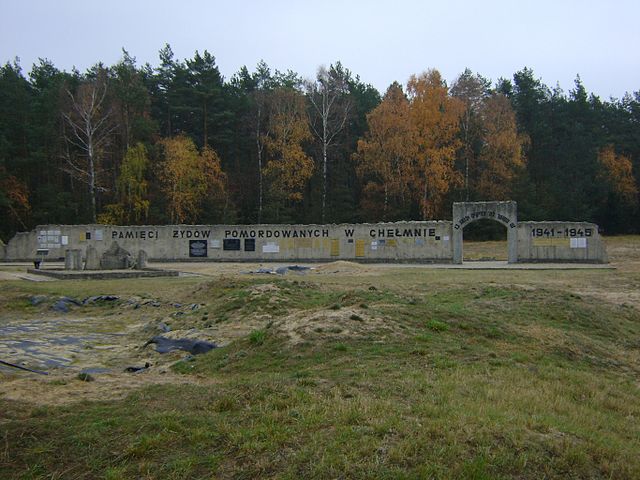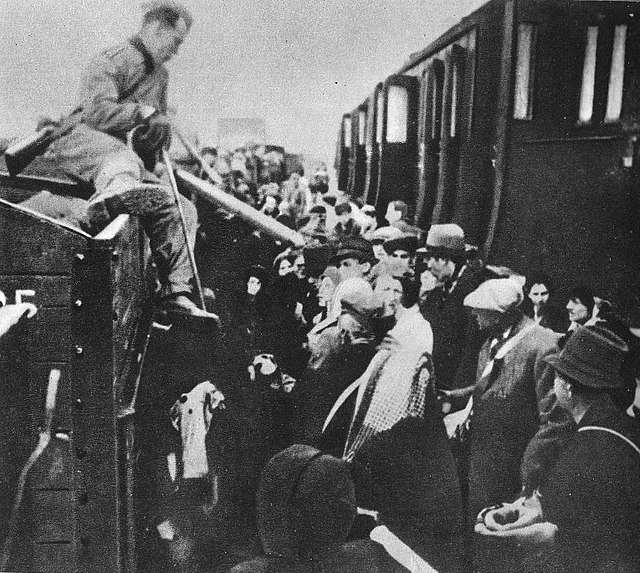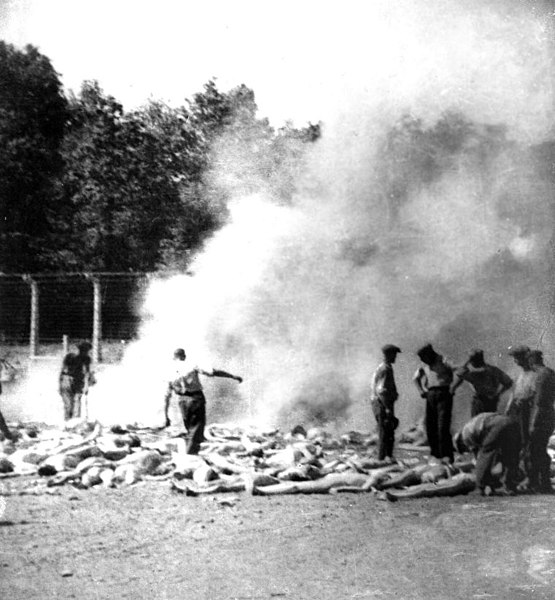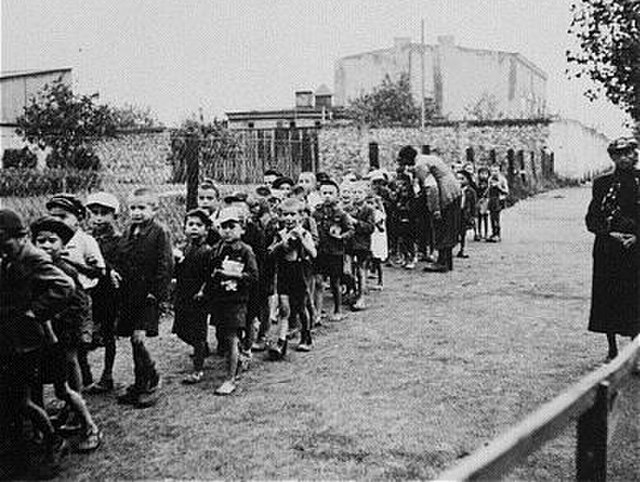Chełmno extermination camp
Chełmno or Kulmhof was the first of Nazi Germany's extermination camps and was situated 50 km (31 mi) north of Łódź, near the village of Chełmno nad Nerem. Following the invasion of Poland in 1939, Germany annexed the area into the new territory of Reichsgau Wartheland. The camp, which was specifically intended for no other purpose than mass murder, operated from December 8, 1941, to April 11, 1943, parallel to Operation Reinhard during the deadliest phase of the Holocaust, and again from June 23, 1944, to January 18, 1945, during the Soviet counter-offensive. In 1943, modifications were made to the camp's killing methods as the reception building had already been dismantled.
Chełmno extermination camp
Gauleiter Arthur Greiser in Poznań (Posen), 1939
A model of Magirus-Deutz gas van used for murder at Chełmno; the exhaust fumes were diverted into the sealed rear compartment where the victims were locked in. This particular van had not been modified yet.
Deportation to Chełmno
Nazi Germany used six extermination camps, also called death camps, or killing centers, in Central Europe during World War II to systematically murder over 2.7 million people – mostly Jews – in the Holocaust. The victims of death camps were primarily murdered by gassing, either in permanent installations constructed for this specific purpose, or by means of gas vans. The six extermination camps were Chełmno, Belzec, Sobibor, Treblinka, Majdanek and Auschwitz-Birkenau. Extermination through labour was also used at the Auschwitz and Majdanek death camps. Millions were also murdered in concentration camps, in the Aktion T4, or directly on site.
Extermination camp
Two of the four crematoria at Auschwitz II (Birkenau).
Members of the Sonderkommando burned the bodies of victims in the fire pits at Auschwitz II-Birkenau, when the crematoria were overloaded. (August 1944)
Jewish children during deportation to the Chełmno extermination camp








